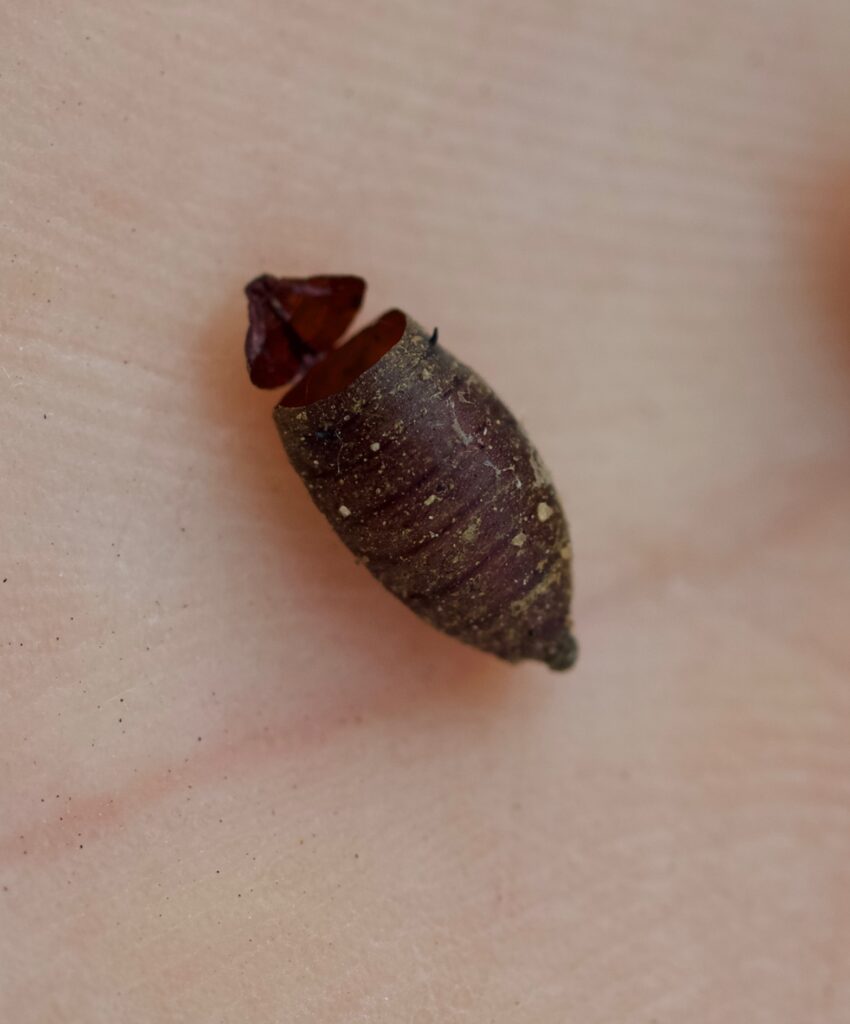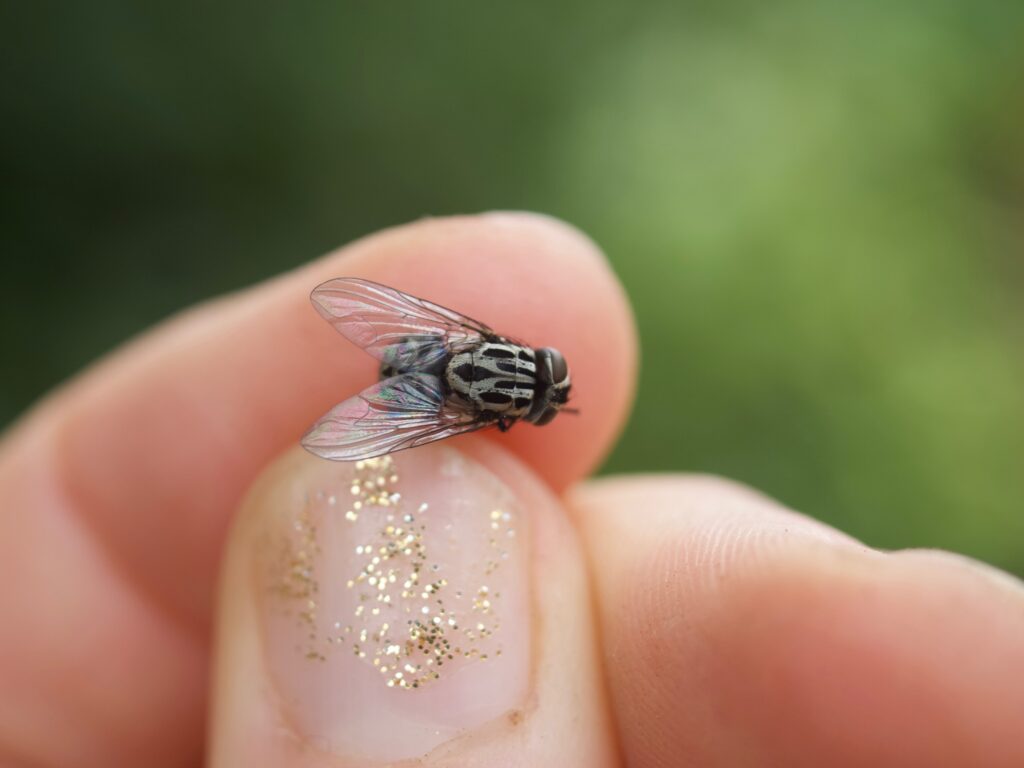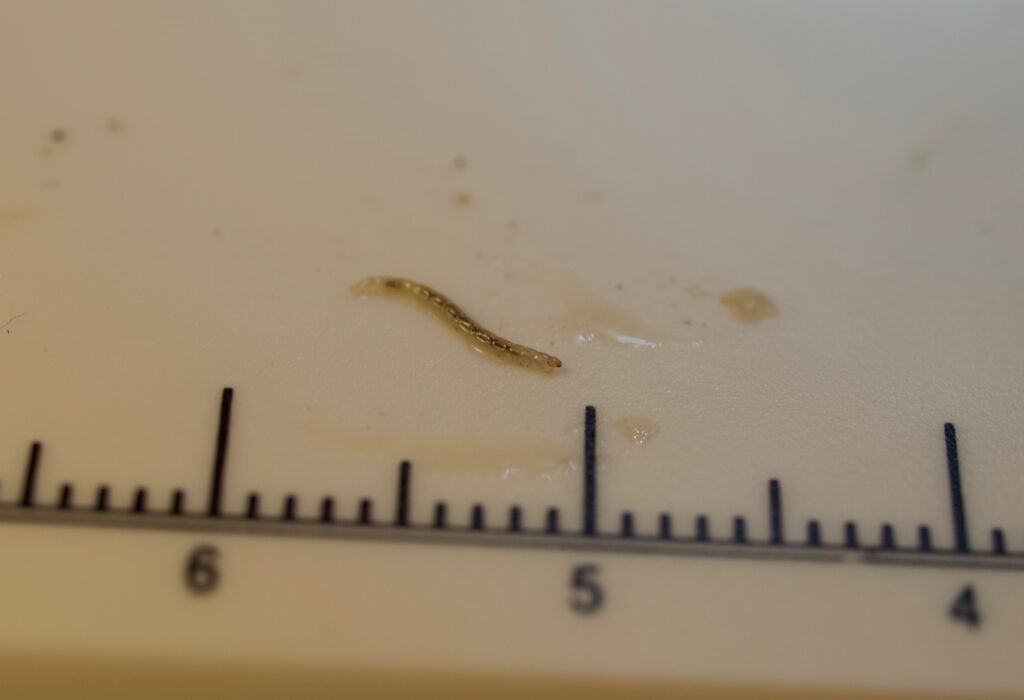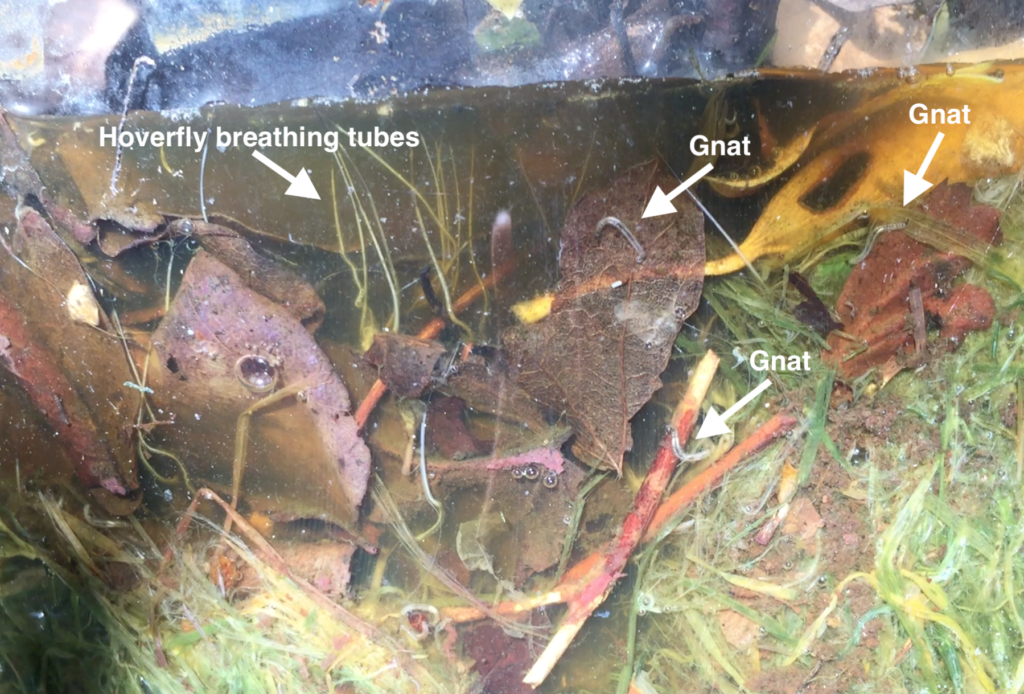It’s certainly not just hoverflies that develop in a Lagoon environment, there is a large community of insects, not limited to gnats, muscids, and mosquitos, but these are the major groups that you may find in and around your Lagoons.
Muscids
One of the key beasties that not only can be confused with hoverfly larvae, but may have a major impact on your Lagoon hoverflies is the predatory muscids (also a fly). These have a similar-looking larval stage, but they don’t have a breathing tube, and they do have a pointed head-end with black-looking mouthparts (see images below).


This group are predators and will eat hoverfly larvae, though they have likely evolved to feed on mosquito larvae. There are other species that look very similar to these which, like Lagoon-dwelling hoverflies, only eat microbes. This is the natural community that use water bodies like Lagoons, so there is no need to do anything other than make the observation. However, due to their negative effects on hoverflies, and as these are not the focus of our project, we have explored ways of reducing their impact. We have found that positioning Lagoons above ground level significantly reduces the number of Lagoons occupied by these predators, however we don’t yet know what impact positioning has on hoverfly species diversity.


If you are keen to remove this predator from your Lagoon, you can always move them to a different water body, move the hoverfly larvae after counting them, or you can create a fresh Lagoon.
Gnats
Worm-like larvae that look likes these (below) are likely to be nematoceran larvae (suborder of flies), which like hoverflies are saprophages, they eat decaying organic matter.



